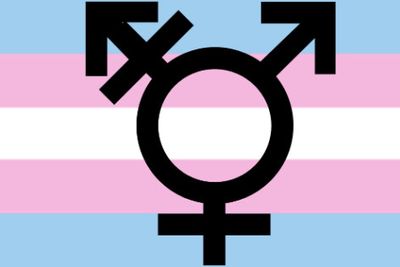8 Ways You Can Be More Trans Inclusive
By Tab Sylvester – Nov. 6, 2014
Just in time for Transgender Awareness Month, and in the midst of HERO’s (Human and Equal Rights Organizers) Trans*, Not Transparent campaign, Echo caught up with Kelley Dupps, the advocacy group’s training director, for tips on ways community members can be more trans inclusive.
“Just as there is tremendous diversity in the LGB community, there is a spectrum of diversity in the T, too,” Dupps said.
Here are 8 ways to respect and acknowledge the T in LGBT:
1. RESPECTING PRONOUNS
It’s more than just about using preferred pronouns. As we know, sexuality and gender expression are spectrums – the grey area between the black and white. So, what do you do when you don’t fit in the gender expression box? Dupps, a queer trans-identified person, offers a simple solution:
“For the folks who don’t identify in the binary of she or he, our option is ‘they,’” Dupps said. “This makes grammar check freak out. But at this point, ‘they’ is an appropriate pronoun for those of us in the grey area – the fuzzy area of gender-fluidity. I identify as a queer trans person – neither woman nor man. Many folks hear ‘trans’ and think the individual will use all treatments and surgeries to become their true gender. That is true for some trans folks. For some of us, we’re the folks that check ‘other’ on the form in the gender section.”
2. ADDING “OTHER” AS AN OPTION
One of the many problems for trans and queer people is the fact that they might not always fit into the ‘F’ or ‘M’ box while filling out various types of paperwork.
“Most of the time I don’t bother answering that question simply because there is not an option for me,” Dupps said. “I happily check the ‘other’ box when it’s available. Having inclusive policies doesn’t mean anything if its not reflected in the everyday face of what the public sees.”
3. ACKNOWLEDGING THE WORD QUEER
Once a negative term, queer has come to mean many different things to many different people and is becoming a preferred label for some community members.
“Today, I am one of the many proud queers out there because queer makes sense to me,” Dupps said. “I’m not an ‘L,’ I’ve never identified as a lesbian, although this is the default label for gay women in society. I’m not a ‘G,’ as that connotation is generally reserved for gay men. I’m not a ‘B.’ My option left is ‘T,’ which kind of works if that’s my only option. But the ‘Q’ fits and our community should recognize and reclaim this term.”
4. GENDER-NEUTRAL PUBLIC RESTROOMS
A concept that’s gaining momentum as a way to respect and protect our trans friends and loved ones is gender-neutral public restrooms.
Let’s not forget Republican member of Arizona’s House of Representatives, John Kavanagh, and his attempt to force jail time on trans people for using the “wrong” restroom back in March 2013, Dupps emphasized.
“Because of my gender expression and society’s assumptions, I have been confronted in more public restrooms than I care to recall,” Dupps said. “I chose to use the women’s restroom because I was less likely to be met with violence than if I had tried to use the men’s room. Gender-neutral bathrooms allow people like me to use public facilities without fear of violence, police scrutiny or public humiliation.”
5. ASKING THE RIGHT QUESTIONS
We all have questions, but it’s important to ask respectful ones. According to Dupps, questions such as, “How long have you and your partner been together?” and “What are your preferred pronouns?” can create a lasting positive impact on both parties.
“It’s good to get personal, but not in a way that would offend or upset the other person,” Dupps said. “Ask them questions that they would be proud to answer.”
6. KNOWING IT’S OK TO MESS UP
Just like with any other learning experience, you’re not always going to get it right on the first try.
“After we disclose our trans identity, the people in our lives begin a learning process of their own, dealing with name change and pronoun shift is just the beginning,” Dupps said. “One of the main things for everyone to remember is that it’s OK to mess up-as long as learning happens.”
7. BEING A GOOD ALLY
The best way to make anyone feel welcome is to be a good friend or ally. Dupps said this includes sharing knowledge in an effort to educate others as well as and supporting your trans friends in times of need or crisis.
“Being a good ally means being a good friend,” Dupps added.
8. #MORETHANMARRIAGEAZ
Arizona (as well as 30 other states across the nation) has finally achieved marriage equality, but Dupps said it’s important to make sure everyone is aware of that, in Arizona, it is still legal to be fired, be kicked out of a restaurant or denied service, denied an apartment or house and/or second-parent adoption rights for being LGBTQ.
“There’s more to equality than marriage, like employment protections, adoption rights and continued fight for equal protection under the law,” Dupps said. “HERO’s current campaign, #MoreThanMarriageAZ, works to address these gaps in equality by engaging community members to create equality in their home communities through HERO trainings like Advocacy 101 and LGBTQ 101.”
Information on Advocacy 101 and LGBTQ 101 is available here.
For more information on HERO’s Trans* not Transparent campaign or Trans* for Trans* workshops, visit herophoenix.org.
